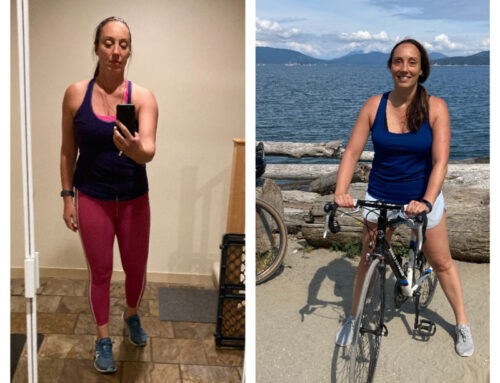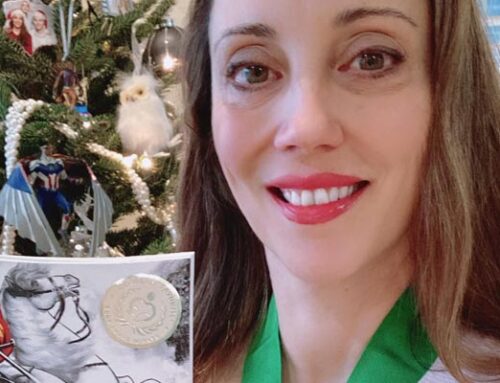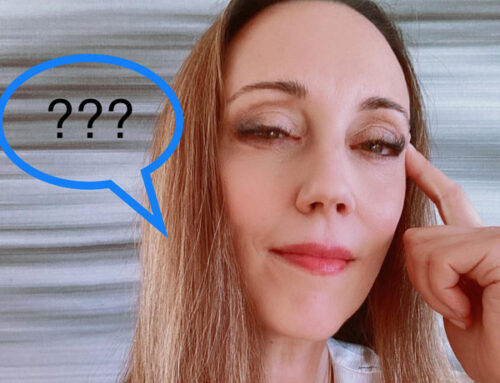The Voice in Your Head – Using Adaptive Action Tools to Move Forward in Uncertainty
“Take a method and try it. If it fails, admit it frankly and try another. But above all, try something.” – Franklin Roosevelt
The uncertainty wrought by the pandemic has humbled even the most stalwart change enthusiasts. Even though it is my job to lead others in ambiguity, I confess I sometimes hate uncertainty. If you feel the same way, we are in good company. Research on the neuroscience of change speaks to the ‘fight or flight’ response evoked when certainty is removed. As blood is reduced form the pre-frontal cortex where most of our considered thought processing occurs, our ability to think clearly is reduced and memory is impaired. This is often accompanied by anxiety related to perceived threats associated with loss or deprivation.
The pandemic has created a global experience where we all have had to attend to this discomfort at some level.
One of my favourite change practitioner tools comes from the Human Systems Dynamics (HSD) Institute – the Adaptive Action Cycle.
Adaptive action is an ongoing planning process that can help you move through uncertainty. Essentially, you try something (anything), observe the changes in patterns or impact this particular action brings, and then adapt or try something new until you have found the right fit for purpose. The Adaptive Action Cycle asks three simple questions:
- What? What is the pattern you are trying to shift? What patterns of interactions or decisions will help you shape success?
- So What? Helps you make sense of those patterns.
- Now What? Informs the actions that influence yourself towards a more purposeful approach, success and sustainability of your change.
What patterns in your life are making you stuck? One of the things I have been keen to work on is the voice in my head. Being an anxious soul, I often experience cognitive distortions. These are the ways we twist or distort information towards a bias of reinforcing negative thought patterns. This then leads to a cycle of increased anxiety and difficulties in managing everyday stress. Most people experience these regularly. Can you relate to a few examples?
- All-or-nothing thinking: If your performance falls short of perfect, you see yourself as a failure.
- Should, must or ought statements: Motivating yourself with “I should…” and then experiencing the inevitable emotional guilt.
- Labeling or mislabelling: Instead of describing the error, attaching a negative label to yourself. “I am a loser.”
- Mental filter: Picking out a single negative detail and dwelling on it exclusively to the exclusion of all other events.
- Emotional reasoning: You assume your negative emotions reflect the way things are. “I think, therefore it must be true.”
- Personalization: You see yourself as the cause of some negative external event, for which you are not responsible.
Now imagine how these thought processes impair your ability to innovate, adapt or grow. Are these limiting beliefs destroying your confidence and holding you back? Are these mindsets making you focus on the likelihood that your will not succeed, rather than allowing you to visualize unlimited possibilities?
Recognizing that as an individual, I am a complex adaptive system, I focused on using HSD tools to shift negative thought patterns within myself to better support those I was leading through uncertainty. I became interested in some of the basic principles of cognitive-behavioural therapy (CBT) and how HSD tools could shift patterns in my thinking.
The CBT triangle looks like this: in layperson’s terms, it means my thoughts influence my feelings, which also affect my behaviours.
By working to shift those negative thought patterns, I can re-orient my thinking away from the distorted, towards healthier patterns – thereby influencing how I feel about myself, and show up for others.
In using the adaptive action model, my aim was to challenge the negative thoughts (What?), that influence the feelings and behaviors (So what?), such that I could constructively explore the ‘Now what?’ I approached this from a position of curiosity and self-reflection, rather than judgment.
This process began by describing the patterns within myself:
- Irrational worry leading to a pattern of internally catastrophizing / panic attacks.
- Negative or critical feedback received ‘deeply’ as indictment of that negative ‘self.’
- Constant self-criticism leading to persistent feelings of sadness, anxiety and shame.
- Fear of stretch and growth holding me back from taking risks or leaps professionally. (Lower resilience to change).
- Fear of judgment resulting in feeling self-conscious when presenting to colleagues.
- ‘Disease’ of perfectionism leading to ‘all or nothing’ attitude / paralysis.
What followed was an exploration of the patterns I wanted to shift or see:
- Desire to move from a judger path to a learner path (when receiving critical feedback).
- Approaching situations from a perspective of inquiry (i.e., be curious about the thought; ask myself open-ended questions that lead to exploration vs judgment; and turn defensiveness into self-reflection.)
- Challenging negative thought patterns in ‘real time’. This includes a conscious commitment to speaking to myself with the same compassion and support I would offer a best friend or colleague.
- Forgiving myself.
- Accepting ‘good enough for now’, when prefect is not an option.
- Acknowledging the positive (accept compliments) vs brushing them off or dismissing them.
During this personal adaptive action cycle, I used the following HSD models:
- Four Truths (subjective, normative, objective and complex)
- Same and Different
- Six Questions (to challenge thinking patterns in uncertainty)
Here are some practical examples: Every time a self-critical thought surfaced, I would stop and consider the Four Truths. Is this statement a reflection of objective truth? Or is it my subjective interpretation? (If I felt I couldn’t identify the objective truth vs normative truth, I would ask a trusted friend or colleague for their opinion). I also explored the ‘Same and Different’ model in terms of how I saw myself and my value proposition against how clients and colleagues saw me. In this context, I was curious around what was same and different in terms of thought patterns during times of relaxation / joy, vs times of pressure / stress.
If the criticism was external, I also chose to be curious about the feedback. What could I learn from this? Rather than assume that the relationship was poor, I would turn disagreement into a shared exploration of observations, wants and needs to move forward. The Six Questions were also a great framework for those conversations:
- What are the three most important things about present situation?
- What do you want to be same / different in the future?
- What is for sure and what are your questions? (observations)
- What contradictions to you see?
- What will make a difference in the future?
- What surprises you?
The complex truth within this story is that personal growth is an infinite gain and journey. It is a constant exploration and series of adaptive action cycles as I grow into my true self. When I take all of the ‘truths’ into account, I am empowered to decide what is most useful for me.
My primary measurement of success in this journey, focused on one indicator initially – simply being mindful that the negative thought was there in the first place and not an underlying part of my psychological make-up. By acknowledging its existence as an ‘intrusive’ or ‘unhealthy’ thought, I was able to identify patterns around situations that give rise to such thinking. From this vantage point, I was to apply further adaptive actions in relation to self-care to reduce these instances.
The second measure of success related to the actual process of ‘challenging vs accepting’ these thought patterns. By applying the tools to the CBT triangle, I was able to mentally note those occasions when the thought arose and shift the patterns of
thinking in the moment. Over time, the patterns began to shift as new neural pathways were created.
The hectoring voice is becoming more silent.
Recognizing that we, as individuals, are complex adaptive systems, we have the power to make whatever necessary shifts are required to elevate our own personal and professional experiences.
So in this spirit, try applying the adaptive action framework in your thought processes and see where it takes you.
What is one shift YOU will make to disrupt the cognitive distortions in your mind?






This is excellent Lisa! I really enjoyed learning how you have practically applied HSD concepts to the more personal side of things. Many of your examples resonated with me and encouraged me to try them myself! Congratulations on the launch of your blog and thanks for sharing it with us.
Thanks Tonya Lynch! I’m glad it resonated for you.
Lisa, I really love your inspiring words. I also like the structure of the blog content. Keep it going!